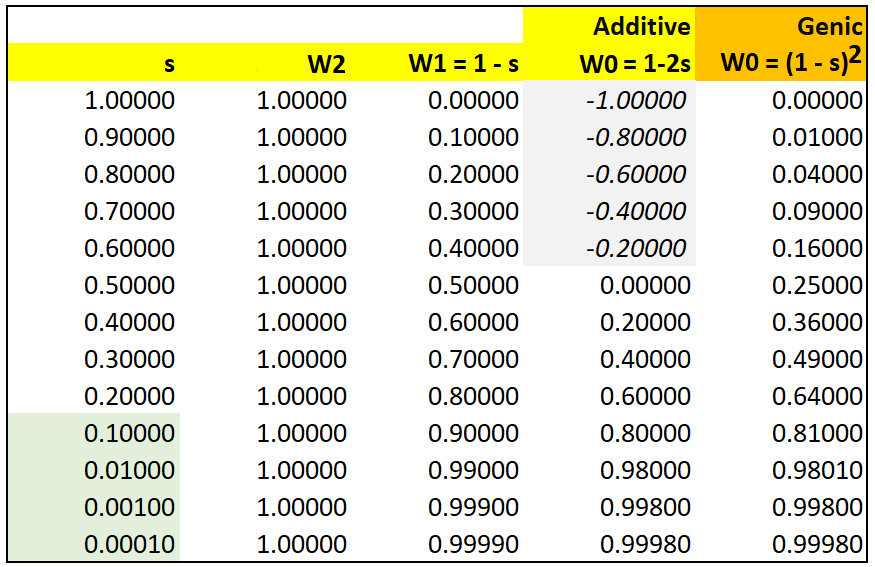| AA |
AB |
BB |
| W0 |
W1 |
W2 |
| 1 |
1 - s |
(1-s)(1-s) = (1 - s)2 |
Genic
Selection
In contrast to additive selection where each copy of the B allele modifies fitness by a constant amount s, in genic selection each copy of B modifies fitness by a constant factor (1- s). That is, fitness is multiplicative. Genic selection also models selection in populations of haploids, such as bacteria or viruses, because each deleterious allele in the population reduces population fitness by the same factor.
It can be shown that the change in allele frequencies in one generation of selection, where p = f(A), is
p' = (p) / (p + (1 - s)(q))
which re-written in terms of f(B) = q is
(1 - q') = ((1 - q) / (1 - q) + (1 -
s)(q)) = (1 - q) / (1 - q + q - sq) = (1 - q) / (1 - sq)
-q' = (1 - q)/(1 - sq) - 1
q' = 1 - (1 - q)/(1 - sq) = - q / (1-sq)

q' = 1 - (1 - q)/(1 - sq) = - q / (1-sq)

Unlike
Additive selection, Genic selection can
model large values of s, because
the multiplicative contribution of alleles
leaves a small but positive W2 fitness.
Note that Genic selection
converges on Additive selection
when s < 0.01, because (1 -
s)2 =
1 - 2s + s2
~ (1 - 2s) when the s2
term is negligible.
HOMEWORK: Use the GSM model in Excel to examine the shape of the curves for Additive, Genic, & Dominant selection against a deleterious recessive for the same values of s.
HOMEWORK: Use the GSM model in Excel to examine the shape of the curves for Additive, Genic, & Dominant selection against a deleterious recessive for the same values of s.
Figure © 2013 by Sinauer; Text material © 2024 by Steven M. Carr